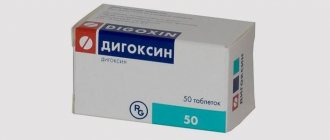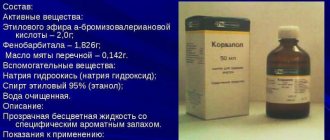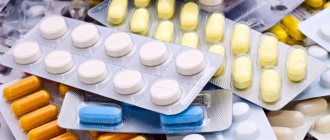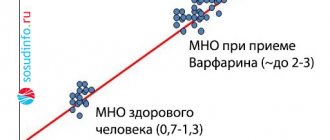Phlebotropic drugs are a broad pharmacological group of medications that normalize venous blood flow, reducing pressure in the vessels of the lower extremities.
Phlebotonics with lymphotropic action influence the frequency of contraction of the walls of veins (deep and superficial), improve blood flow, and have an anti-inflammatory effect. Often prescribed for chronic venous insufficiency.
Phlebotropic agents are also used for preventive purposes and before surgery to remove blockage of veins.
What is the difference between phlebotonics and phleboprotectors?
Phlebotonics and phleboprotectors are drugs with similar effects on the human body, but with some differences.
The first group of medications improves the tone of the vein walls, affects their elasticity and blood rheology. Phlebotonics are used for prevention and treatment purposes.
Phleboprotectors characterize themselves as anti-inflammatory, anti-destructive agents, which are most often prescribed only for the purpose of disease prevention, without eliminating the cause of the disease.
TOP drugs in the table
The proposed rating is based on reviews from doctors and patients. These are the 10 best venotonics according to the quality brand website, which help eliminate pain, stimulate the tone of the veins, and prevent complications.
| A drug | Characteristic |
| Troxevasin | The best phleboprotector in the price-quality category |
| Detralex | The drug with the most persistent effect in terms of duration |
| Phlebodia 600 | Venotonic with an optimal dosage schedule - one-time use |
| Venoruton | Effective in advanced conditions |
| Doppelgerz Venotonic | The best natural composition |
| Angionorm | The most economical product: enough packaging for a full course |
| Venarus | Domestic analogue of the French Detralex |
| Lyoton | The most effective external gel |
| Diclofenac | The fastest possible relief of pain and inflammation |
| Medical Collagene 3D Venotonic | Cosmetic cream for the first symptoms of varicose veins |
Contraindications: risk groups
Phlebotonic therapy is generally contraindicated for those categories of patients who have chronic diseases of the cardiovascular system.
Such medications are also prescribed with caution in the following cases:
- Chronic diseases of the gastrointestinal tract in the acute stage: ulcers, pancreatitis, gastritis.
- Individual intolerance to rutosides - allergy.
- Acute renal failure.
- Progressive infectious diseases.
It is permissible to use medications while driving or during pregnancy, if there is no risk of developing pathologies in the fetus.
It is worth noting that if there are contraindications to taking the active substance in the form of tablets or capsules, the option of therapy with local agents may be considered.
For example, phlebotonics are actively prescribed for hemorrhoids during pregnancy.
Contraindications and side effects
Phlebetonics are the most gentle type of medication; all medications used are based on natural ingredients. There are no toxins, they do not accumulate in the affected areas, and are eliminated from the body in the shortest possible time - 15% with urine, the rest with feces. However, there is a risk of developing an allergic reaction.
Doctors do not prescribe them for patients suffering from:
- bleeding from the anus;
- diabetes in a severe stage;
- renal failure;
- malignant formations in the esophagus;
- pathology of the autoimmune system.
Even if you do not belong to a “risk group,” we still strongly recommend not to resort to these medications without first consulting your doctor.
External use
Effective phlebotonic ointments for hemorrhoids are also very effective for treating this unpleasant disease.
Fast-acting medications for hemorrhoids are creams and ointments based on diosmin. The process and treatment regimen will depend on the course of the disease, the presence/absence of pain in the perineum.
Pathological dilation of the veins with painful symptoms in the rectal area with the simultaneous formation of hemorrhoids is treated with ointments and tablets.
The use of phlebotonics is possible according to two schemes:
- Monotherapy. Continuous and long-term treatment is prescribed in case of relapse of the disease.
- Course treatment. Prescribed at the time of exacerbation of hemorrhoid symptoms. The action of the drug is aimed at the rapid onset of remission. It is used in complex therapy with painkillers and anti-inflammatory drugs.
Topical ointments act faster than tablets, but the results are short-lived. Prescribed if there is a need to reduce the symptoms of painful hemorrhoids and varicose veins.
Ointments are used during course therapy, enhancing the effect of the tablets.
Popular ointments are “Troxevasin” and “Horse chestnut extract”.
What creams are most often prescribed - Proctosan, Gemoprost, Heparin ointment, Ultraproct, Stellanin 3%, Venitan.
Review of pharmacological proposals
Phlebetonics are produced in several groups. There are drugs based on:
- diosmina, such as Phlebodia 600, Detralex, Venolek, Venarus;
- routine, for example, “Troxerutin”, “Troxevasin”, “Venoruton”;
- herbal ingredients – “Venitan”, “Aescusan”, horse chestnut.
One of the most used is “Troxevasin” (the active ingredient is troxerutin). It has angioprotective, anticoagulant and anti-edematous effects, and can also be used as a mild analgesic.
Sometimes it causes allergies and interferes with normal digestion. Not recommended for:
- gastritis and stomach ulcers;
- pregnant women in the first trimester;
- allergic reaction to the drug.
Supplied in capsule and gel form. Two capsules are prescribed once a day for two weeks.
"Venolex" is indicated for inflammatory processes in hemorrhoidal veins:
- relieves pain;
- reduces swelling;
- prevents congestion in the vessels of the rectum.
Contraindicated in case of allergic reactions and dyspeptic symptoms.
Tablet form of release
In this form, medications are prescribed in the initial stages of the disease. Most often, to maximize the effect, taking tablets is combined with applying gels and ointments. Tablets are not prescribed to children under 14 years of age and to pregnant women throughout the entire period.
The most effective remedy is Detralex , whose active substances include diosmin and hesparidin. The drug relieves pain and has a venotonic effect. It is an angioprotective and anticoagulant agent. There are no side effects, it is easily tolerated.
Phlebodia 600 is more often used as a therapeutic agent. Reduces the risk of inflammation, has a resolving effect. During use, it strengthens vascular tissue and restores microdefects.
Contains 600 mg of diosmin, which puts the drug in first place in terms of drug concentration. The treatment course lasts a week, take 2-3 tablets per day. Effective in the initial stages of hemorrhoid development.
"Venarus" helps in the initial stages, as well as in acute and chronic forms of the disease. The composition includes 450 mg of diosmin, 50 mg of hesperidin. Treatment is prescribed for a period of one to two months, depending on the stage. In the acute form, a short six-day course is possible, during which it is prescribed to take the first three days - 6 tablets per day, and 4 tablets - the remaining three days.
The medicine may cause nausea and vomiting if you are hypersensitive. There is a risk of diarrhea. If any such reaction occurs, treatment is stopped and an unscheduled consultation with a specialist is carried out.
Candles
The main advantage of this type of drug is ease of use and high concentration of medicinal substances. The suppositories are quickly absorbed into the blood, eliminating congestion in the veins. Particularly effective in case of lumps appearing inside the anus.
"Procto-Glivenol" is prescribed for anal fissures, if the disease takes an acute or chronic form. Active ingredients: tribenozide (400 mg), lidocaine (40 mg). Maximum concentration is achieved in 2 hours. Efficiency:
- have an anti-inflammatory effect;
- relieve pain;
- restore the walls of capillary vessels;
- act as an anesthetic;
- relieve itching and burning in the anus.
"Gepazolone" is also effective in the acute stage. The active ingredient is heparin. Efficiency:
- resolves lumps;
- eliminates microcracks in the anal passage;
- restores the tissue of capillary vessels.
"Relief" is effective both in case of complications and as a prophylactic agent. Contains shark liver oil. Contraindicated for children under 12 years of age. Serves as:
- restorative;
- healing;
- painkiller;
- hemostatic agent.
Products for external use
Some of the most effective:
- “Heparin ointment” based on heparin and anesthesin. It is a therapeutic agent used at different stages in combination with other drugs. Reduces the manifestations of the disease. The ointment is applied to a bandage applied to hemorrhoids.
- "Lyoton gel" . Anticoagulant. Makes lymph more fluid, resolves lumps, relieves pain, and prevents the formation of blood clots. Apply a thick layer to the anus three times a day.
- "Troxevasin" . Similar to tablets, but on a gel base. Restores blood circulation, seeping into blood vessels, strengthening their walls. Heals microcracks faster and reduces the risk of hemorrhoidal ulcers. It is prescribed to be taken twice a day for two weeks.
Gels and ointments should be taken only in combination with other drugs, since they have a short duration of action - only 12 hours. But with their help it is possible to quickly reduce painful symptoms.
Medicines based on plant extracts
These substances are more often prescribed to older people, those whose immunity is weakened after illness. This also includes pregnant women and children under 14 years of age. Treatment may take a long time. Consist of natural ingredients, no synthetics. Available in the form of drops, ointments and gels. Based on them, decoctions are made for lotions, compresses and baths:
- "Aescusan" - horse chestnut extract, contains vitamin B1. Reduces tension in blood vessels. Prescribed orally, 5 drops per day.
- "Antistax" - available in tablet form. Prescribed 1 tablet with meals three times a day. Restores the vascular system.
Phlebotonics are prescribed as a therapeutic agent. Although they can be freely purchased at any pharmacy (no prescription required), we strongly recommend that you have a preliminary consultation with a proctologist before taking them.
Phlebotonics in the form of suppositories
Rectal products based on diosmin are most often produced in the form of suppositories. They are much more convenient than ointments, and their area of influence is larger. They are prescribed both in the absence of prolapse of hemorrhoids and in their presence.
They have a quick effect on the narrowing of the walls of blood vessels, restore their elasticity, and normalize blood flow. They are also used for bleeding convex hemorrhoids.
In what cases is it prescribed
All types of venotonics have the same indications for use related to the medicinal effects of the drugs:
- Varicose veins of any location, but mainly when affecting the lower extremities.
- Impaired movement of lymphatic fluid (lymphostasis or lymphedema, elephantiasis), in most cases associated with a current or treated oncological process.
- Acute forms of pathological venous outflow with a high risk of blood clot formation (thrombophlebitis, hemorrhoids).
- The chronic phase of vascular insufficiency with changes in the tissues surrounding the veins (periphlebitis, dermatitis, ulcerations).
- Pathology of the small or capillary vascular network (microvasculature) in general somatic and systemic diseases (inflammation of the walls of blood vessels, atherosclerotic changes, diabetes, shock conditions due to injuries, disturbances of blood flow in the structures of the brain).
Thrombophlebitis
Recovery after a fracture
Phlebotonics are also prescribed for a broken leg. The purpose of this group of drugs is justified by the fact that during the bone healing process it is necessary to ensure proper blood microcirculation, reduce the risk of blood stagnation, and normalize lymphatic drainage.
If surgery was performed, functional treatment is prescribed.
To speed up the formation of callus at the fracture, you need to take phlebotonics.
Restoration of the structure of the limb, as well as normalization of its functions, occurs much faster.
During the admission process, it is recommended to carry out a control x-ray. The first - after 2 weeks, the second - no earlier than a month after the fracture.
Patient reviews of treatment
Patient reviews of treatment with phlebotonics vary. Most patients who use phlebotonics medications to treat varicose veins are satisfied with the results obtained.
Among the positive effects, patients note:
- reduction of pain in the lower extremities;
- eliminating the feeling of heaviness in the legs;
- reduction of swelling;
- reducing the appearance of spider veins;
- ease of use and the possibility of choosing phlebotonics for oral administration or combining it with external agents;
- alternative for surgical intervention;
- acceleration of the rehabilitation process after phlebectomy.
The negative points include:
- individual intolerance to drugs;
- limited use during pregnancy;
- insufficient effect from the use of phlebotonics;
- material costs for the purchase of phlebotonics.
This is interesting:
- Miniphlebectomy is a painless method of treating varicose veins. Women and men are susceptible to varicose veins. When the question arises about the need to treat varicose veins, methods…
- Vein sclerotherapy is a simple treatment for varicose veins! One of the problems of humanity is varicose veins of the legs. Swollen veins, feeling of heaviness in the legs,...
- Varicose veins of the labia during pregnancy: what to do? Varicose veins of the labia during pregnancy are a fairly common phenomenon. The pathology carries with it a pronounced cosmetic…
What inexpensive analogues of phlebotonics are there?
Any drug is the result of our own developments and research. Often the cost of phlebotonics does not allow them to be used as a full course of treatment.
However, if you find an alternative replacement, you can always use cheaper, but no less effective, herbal-based drugs.
Antistax
Available in tablet form. The drug is of natural origin. The main component is grape leaf extract.
Bioflavonoid, which is the active component of the drug, is able to eliminate membrane stabilizing activity, which is most often aimed at reducing the elasticity of the vascular wall of veins. The therapeutic effect is aimed at getting rid of lymphostasis.
Ginkor Fort
Combined drug, a group of semi-synthetic phlebotonics and angioprotectors. Active ingredients: Ginkgo Biloba extract, troxerutin, heptaminol.
Increases the tone of veins, reduces the permeability of the vascular wall, and has a long-term analgesic and anti-inflammatory effect. The active components have the ability to block the mediators histamine and serotonin.
Used in complex therapy. When taken for hemorrhoids, it promotes rapid healing. There is a form in the form of tablets and suppositories for rectal use.
Troxerutin
It is an analogue and inexpensive version of the well-known Troxevasin. Prescribed in complex therapy for chronic venous insufficiency.
Troxerutin blocks the oxidation of vitamin C and removes breakdown products from the capillary bed. Available in the form of ointments, creams, gels, tablets and injections for intramuscular administration.
Types of phlebotonics
Phlebotropic drugs are used only in the complex treatment of edema caused by varicose veins and other diseases.
The forms of their release are different:
- tablets, capsules, dragees;
- ointments are absorbed slowly due to the fatty base in which the medicinal substance is not completely dissolved. To achieve maximum effect, apply a thick layer under the bandage, preferably at night;
- gels are made on a water-soluble basis, therefore they have a lighter shape. The light absorbent form allows you to apply them during the day without fear of staining your clothes;
- creams are emulsions in the form of fatty particles dissolved in water. Active in case of insufficiency of superficial veins, they can remain under the upper layers of the skin for a long time.
Only a medical specialist can select a therapeutic complex that includes products for external and internal use.
What kind of drugs
So, phlebotonics, what is it? These dosage forms belong to the group of venotonics . In patients with varicose veins, the elasticity of blood vessels decreases very sharply, and blood is retained in the legs. In this case, patients feel severe heaviness, swelling, and pain.
In case of untimely initiation of treatment, you can greatly worsen the disease and lead to thrombophlebitis or lymphatic ulcers.
Therefore, it is very important to consult a doctor in the initial stages of the disease so that the correct treatment can be selected.
It is in such cases that doctors prescribe a course of treatment with phlebotonics, which help quickly relieve pain .
However, it is worth remembering that treatment with these drugs will not help get rid of the problem of bad blood vessels forever; they are used as local therapy .
Mechanism of operation
Drugs that can act on the lymphatic system help reduce swelling during lymphostasis.
Taking synthetic phlebotonics increases the contraction of muscle fibers, which improves the venous tone of blood vessels, reducing their ability to stretch. Strengthening the vascular walls leads to a decrease in their permeability. As a result, the outflow of stagnant blood accelerates, swelling resolves and the volume of the affected leg decreases. Increased blood circulation helps normalize metabolic processes, which, in turn, stops cell death. The drugs prevent the adhesion of leukocytes to the vascular wall, thereby reducing local inflammation. Phlebotonics with lymphotropic action normalize lymph circulation, eliminating the symptoms of lymphostasis.
The best drugs of the group
The modern pharmaceutical industry offers a huge selection of various phlebotonics and phleboprotectors.
It is difficult to compare them, since the effectiveness of the action is individual. But it is possible to identify the most popular drugs among consumers and doctors.
Detralex
The most common and universal medicine in this group is Diosmin (Detralex).
It has a three-component effect:
- increases venous tone;
- improves the outflow of lymph and blood;
- improves the properties of venous walls.
The drug belongs to bioflavonoids. There are practically no contraindications. The exception is individual intolerance. Its use is permissible during pregnancy and lactation.
The duration of administration is usually up to 6 months, so taking this medicine for longer without a break is not advisable.
Antistax
Antistax has a beneficial effect on venous walls, improves patency, and tones blood vessels. Red grape leaves are used in its production. Presented in tablet form.
Troxevasin
Troxevasin is the most common drug. Tablets and gel of the same name are produced. Widely used for the treatment of varicose veins and CVI. It is particularly effective and quickly eliminates internal inflammatory processes.
There are contraindications, but they are few. The drug should not be used if the patient suffers from chronic diseases of the gastrointestinal tract, kidneys and heart. During pregnancy and lactation it should be used with extreme caution. It is not advisable to prescribe to children.
Troxerutin
Troxerutin is a good antioxidant and effectively fights swelling. It is often prescribed in cosmetology as a remedy that helps get rid of lymphedema cellulite.
Aescusan
Aescusan is an excellent remedy for increasing venous tone and preventing the development of varicose veins.
It is made from horse chestnut seeds, which are famous for their beneficial effects on blood vessels. This list can be continued for a very long time, since the modern pharmaceutical industry tries to please any consumer in terms of price-quality ratio.










